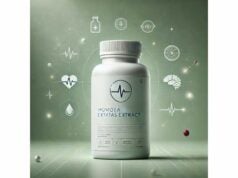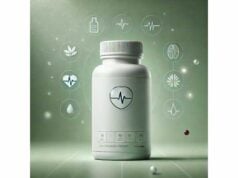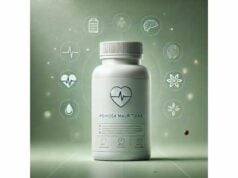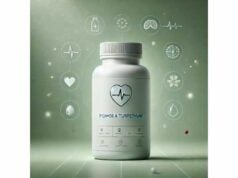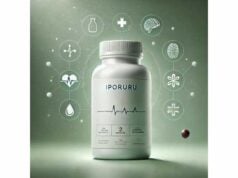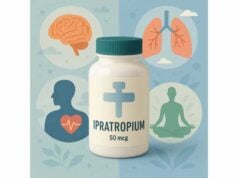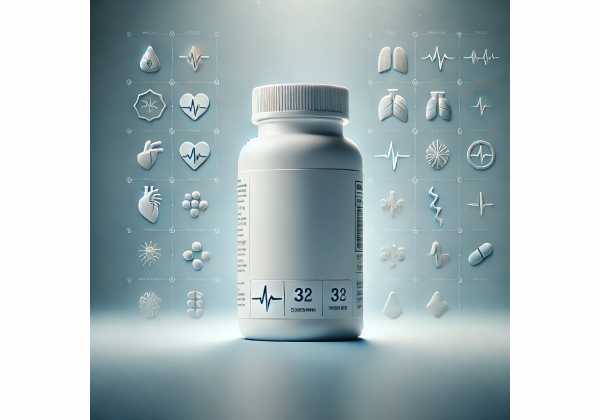
Isaria cicadae—also known as Cordyceps cicadae or Paecilomyces cicadae—is an edible, medicinal fungus that naturally grows on cicada nymphs. Long used in East Asian herbal practice, it has moved into modern research because of unique molecules such as N6-(2-hydroxyethyl) adenosine (HEA) and complex polysaccharides. Early evidence points to renal (kidney) support, immune modulation, and antioxidant activity, with promising signals for eye comfort and skin hydration from topical and oral extracts. Unlike the endangered wild Cordyceps sinensis, I. cicadae is cultivable, which improves quality control and sustainability. Still, human clinical data remain limited, and product quality varies widely. This guide explains what I. cicadae is, how it appears to work, the most studied benefits, how to use it in practice, suggested dosage ranges from current evidence, and who should avoid it or speak with a clinician first.
Quick Overview
- Renal support and inflammation control are the most studied benefits; HEA and polysaccharides appear central.
- Typical supplement use: 500–1,500 mg/day of mycelial extract; products standardized to HEA may target ~2–8 mg HEA/day.
- Safety caveat: a related species (Paecilomyces sinclairii) showed kidney cell changes in rats at high, prolonged dosing; choose reputable I. cicadae products and avoid megadoses.
- Avoid if pregnant, breastfeeding, immunosuppressed, or with advanced kidney disease unless guided by a clinician.
Table of Contents
- What is Isaria cicadae?
- Proven and potential benefits
- How to use it effectively
- How much to take per day?
- Safety, interactions, and who should avoid
- What the research actually says
What is Isaria cicadae?
Isaria cicadae is an entomopathogenic (insect-parasitic) fungus historically used in Chinese materia medica as “cicada flower.” Modern taxonomy frequently groups it under Cordyceps cicadae. Beyond naming, what matters is the chemistry: cultivated mycelia (the “root-like” growth stage) and the synnemata (club-like “fruiting” structures) carry bioactives with distinct profiles. Industrial fermentation can standardize these constituents and avoid harvesting pressures on wild fungi.
Key bioactive compounds
- N6-(2-hydroxyethyl) adenosine (HEA). A modified nucleoside that appears to modulate inflammation and stress responses in kidney cells. Unlike the better-known cordycepin of C. militaris, HEA is particularly associated with I. cicadae.
- Polysaccharides. High-molecular-weight β-glucan-rich complexes from the mycelia and spores. These can shape immune activity (e.g., macrophage and NK-cell function) and contribute to antioxidant effects.
- Sterols and fatty constituents. Ergosterol peroxide and related lipids may add anti-inflammatory or antifibrotic actions in experimental settings.
- Adenosine and related nucleosides. These may influence vascular tone and tissue responses to injury.
How it seems to work (simplified)
- Inflammation modulation: In preclinical models, HEA dampens nuclear factor-κB (NF-κB) activity and influences TGF-β/Smad pathways—switches that drive kidney scarring (interstitial fibrosis).
- Autophagy and cellular housekeeping: Whole I. cicadae preparations have been observed to rebalance autophagy markers and oxidative stress in hypertensive kidney injury models, potentially slowing fibrosis.
- Immune tone: Spore-derived polysaccharides can restore immune organ indices and antioxidant enzymes after chemotherapeutic immunosuppression in animals—suggesting general immune support rather than strong immune stimulation.
- Barrier support and hydration: Emerging cell and animal work hints at benefits for ocular surface comfort and dermal hydration through antioxidative and hyaluronan-supportive mechanisms.
Cultivation and quality
Because I. cicadae is cultivable, trustworthy brands can standardize HEA content and polysaccharide percentages, test for contaminants (heavy metals, pesticides, microbial load), and document the absence of misidentified species. Look for clear species naming (e.g., “Cordyceps cicadae / Isaria cicadae”), standardized HEA content when claimed, and batch-specific certificates of analysis.
Bottom line: I. cicadae is not a stimulant “performance” mushroom. Its niche is gentle support for renal and immune balance, with a safety profile that appears favorable when properly produced and used responsibly.
Proven and potential benefits
1) Kidney support (most studied)
The clearest line of evidence concerns kidneys. In obstructive and hypertensive models of kidney injury, I. cicadae preparations lowered fibrosis markers (e.g., TGF-β1, α-SMA, collagen I) and improved tubular cell integrity. Mechanistically, two threads recur:
- HEA targeting inflammatory-fibrotic signaling. Experimental dosing with isolated HEA reduced pro-inflammatory cytokines and fibroblast activation while improving histology in unilateral ureteral obstruction (UUO) mice.
- Whole-fungus autophagy rebalancing. Extracts modulated SIRT1-related autophagic stress and oxidative stress in hypertensive nephropathy models, aligning with an antifibrotic profile.
For everyday users, this translates into a plausible supportive role for kidney health and recovery from inflammatory stressors. It is not a substitute for medical therapy in chronic kidney disease (CKD), but it may complement clinician-guided care in research contexts.
2) Immune modulation and antioxidant activity
Polysaccharides from I. cicadae—especially those purified from spores—have repeatedly improved immune organ indices (thymus, spleen), macrophage phagocytosis, NK-cell activity, and antioxidant enzyme systems in animals with cyclophosphamide-induced immunosuppression. This pattern suggests adaptive immune support under stress rather than blanket immune stimulation, which may be preferable for balanced resilience.
3) Glucose and metabolic balance (emerging)
Early studies of spore-powder polysaccharides reported improvements in glucose handling and insulin signaling in diabetic animal models, with better lipid metabolism and markers of oxidative stress. While promising, these findings remain preclinical. Anyone using antidiabetic drugs should monitor glucose closely if starting I. cicadae, as additive effects are theoretically possible.
4) Eye comfort and ocular surface
I. cicadae mycelial extracts have shown protective effects against ocular surface dryness and UV-induced lens changes in animal models, attributed to antioxidative and anti-inflammatory actions. People with computer-related eye fatigue sometimes choose I. cicadae alongside omega-3s, hyaluronan eye drops, and screen-break habits. This remains a supportive strategy, not a primary treatment for eye disease.
5) Skin hydration and dermal support
In fibroblast experiments, aqueous I. cicadae extracts increased hyaluronan synthesis and showed antioxidative effects. Users sometimes report better skin comfort when combining I. cicadae with basic skin nutrition (vitamin C, ceramides) and UV-smart routines. Human dermatologic trials are still sparse.
6) General stress and recovery
Because nucleosides influence cellular energy and signaling, some people notice smoother recovery from high-sodium meals or strenuous days—likely indirect effects via vascular tone and inflammation modulation rather than a stimulant boost.
Realistic expectations
- Time frame: Subtle benefits may appear over 4–8 weeks of consistent use.
- Magnitude: Expect gentle, background support. For specific conditions (e.g., CKD, hypertension), discuss all supplements with a nephrologist or primary care clinician.
Who benefits most?
- Adults aiming for kidney wellness support, especially those managing blood pressure and hydration carefully.
- People seeking balanced immune tone during high stress (travel, shift work), paired with sleep and nutrition.
- Those exploring eye comfort support alongside established measures.
Who may not benefit?
- Individuals seeking rapid performance enhancement or stimulation; I. cicadae does not act like caffeine or pre-workouts.
- Anyone expecting a stand-alone therapy for diagnosed medical conditions—this is a complementary, not curative, option.
How to use it effectively
Choose the right format
- Mycelial extract (capsules/powder): The most common form, often standardized to polysaccharides and, in higher-end products, to HEA content (for example, showing milligrams of HEA per serving).
- Spore powder or spore polysaccharides: Less common but interesting for immune balance; verify origin and purification.
- Whole synnema (“cicada flower”): Culinary use in soups and stews; gentler and less standardized; rely on reputable suppliers.
- Liquid extracts/tinctures: Convenient but variable HEA and polysaccharide levels; ask for third-party testing.
What to look for on labels
- Species clarity: “Cordyceps cicadae / Isaria cicadae” listed, not just “Cordyceps blend.”
- Standardization: If HEA is claimed, the label should list mg HEA per serving. For polysaccharides, prefer assays beyond crude “polysaccharides %,” which can overcount non-β-glucans.
- Contaminant testing: Heavy metals, microbial load, mycotoxins; certificates of analysis (COAs) by batch.
Stacking and timing
- With food: Most users take I. cicadae with meals to enhance tolerance.
- Hydration: Kidney-supporting protocols prioritize steady fluid intake; pair I. cicadae with routine hydration (unless on fluid restriction).
- Smart stacks:
- For kidney wellness: I. cicadae + magnesium (as clinically appropriate) + DASH-style diet + blood pressure monitoring.
- For immune balance: I. cicadae + vitamin D (tested and optimized) + adequate protein + sleep hygiene.
- For eye comfort: I. cicadae + screen breaks (20-20-20 rule) + preservative-free lubricating drops + omega-3s.
Quality and sustainability tips
- Prefer cultivated, traceable mycelia to avoid wild-harvest adulteration.
- Brands that disclose fermentation conditions and marker assays (e.g., HEA by HPLC) usually invest in quality.
Special considerations
- Medication review: If you take antihypertensives, antidiabetics, diuretics, or immunosuppressants, consult your clinician before adding I. cicadae.
- Allergy testing: Those with mold sensitivities should start at the low end of dosing and watch for reactions.
- Stop-rules: Discontinue and seek evaluation if you notice new flank pain, dark urine, unusual fatigue, or allergic signs.
Practical routine example
- Morning: 1 capsule mycelial extract with breakfast.
- Evening: 1 capsule with dinner.
- Track: Blood pressure, step count, hydration, and any changes in eye comfort or energy over 6–8 weeks.
How much to take per day?
There is no officially established human therapeutic dose for Isaria cicadae. Existing human work emphasizes safety of HEA-enriched mycelial products and traditional culinary use, while most efficacy data are preclinical. The suggestions below reflect current practice patterns and research-informed boundaries:
Common supplementation ranges (adults)
- Mycelial extract (standardized): 500–1,500 mg/day, divided once or twice daily with meals.
- Whole mycelial powder (non-standardized): 1–3 g/day in capsules or mixed into food.
- HEA-standardized products: Formulations often deliver a daily HEA total of ~2–8 mg. This aligns with safety-focused product development and avoids speculative high HEA intakes. Follow the product’s HEA statement if provided.
When to use the low vs. high end
- Start low (e.g., 500 mg/day extract or 1 g/day powder) if you’re sensitive to new supplements, have multiple medications, or have a history of allergies.
- Consider the upper end (e.g., 1,000–1,500 mg/day extract) only after 2–3 weeks without issues, and if your clinician agrees that a higher trial is appropriate.
Special populations
- Pregnant or breastfeeding: Insufficient safety data—avoid unless your prenatal clinician specifically recommends.
- Kidney disease or transplant: Because I. cicadae targets kidney pathways and may interact with immune tone, use only with nephrology guidance.
- Diabetes and hypertension: If adding I. cicadae, monitor glucose and blood pressure more frequently during the first 2–4 weeks and adjust medications only with clinician oversight.
Forms and bioavailability
- HEA is water-soluble; hot-water extracts and fermentation-derived mycelia tend to deliver predictable nucleoside levels. Polysaccharides extract well in water; dual extraction is less critical than for phenolic herbs.
How long to try
- A fair personal trial typically lasts 6–8 weeks, with tracking of relevant markers (e.g., comfort, energy, clinician-ordered labs where applicable). If no benefit is seen and tolerance is good, some continue for 12 weeks before reassessing.
Do not “megadose.” Extremely high, prolonged intakes are not supported and may increase risk without added benefit. Choose a standardized, reputable product and stay within label directions unless your clinician advises otherwise.
Safety, interactions, and who should avoid
What current evidence suggests
- General tolerance: Cultivated, HEA-enriched mycelial preparations have passed safety pharmacology evaluations in animals without adverse effects on central nervous, cardiovascular, or respiratory systems at studied doses.
- Cautionary note from a related species: A separate species, Paecilomyces sinclairii (historically used in similar contexts), produced kidney cell changes and biomarker shifts in rats after 13 weeks of high-dose exposure. While not I. cicadae, this underlines why responsible dosing and product verification matter.
- Allergy: As with other fungi, allergic reactions are possible—especially in individuals with mold sensitivities.
Potential interactions (theoretical or based on preclinical data)
- Antihypertensives: If kidney inflammation and oxidative stress improve, blood pressure may shift slightly—track home BP during the first 2–4 weeks.
- Antidiabetic medications: Animal data suggest improved glycemic control; monitor glucose to avoid unintended lows.
- Immunosuppressive therapy: Because polysaccharides can modulate immune activity, transplant recipients or those on biologics should consult their specialist.
- NSAIDs and kidneys: Some lab work explored HEA’s protective effects against NSAID-related kidney stress. That’s not a license to combine aggressively—always use the lowest effective NSAID dose and follow medical advice.
Who should avoid or use only with medical guidance
- Pregnant or breastfeeding individuals.
- Children and adolescents (insufficient data).
- Anyone with advanced CKD, kidney transplant, or active glomerulonephritis without nephrologist approval.
- Individuals with a history of severe allergies to mushrooms or molds.
- People on complex medication regimens (anticoagulants, immunosuppressants, multiple antihypertensives) until a clinician reviews for interactions.
Practical safety checklist
- Verify species and standardization (ideally with HEA mg/serving).
- Start low, increase gradually if needed, do not exceed label directions.
- Track BP and glucose if relevant; repeat labs per clinician guidance.
- Stop and seek care for any signs of allergic reaction, unusual fatigue, flank pain, or changes in urine color.
What the research actually says
Strengths of the evidence
- Mechanistic clarity: Across multiple experiments, HEA consistently down-regulates NF-κB and TGF-β/Smad signals tied to kidney fibrosis, and whole-fungus extracts help normalize autophagy and oxidative stress.
- Converging outcomes: Whether the model is obstructive injury, hypertension-induced damage, or chemotherapeutic immunosuppression, I. cicadae or its fractions tend to improve histology, reduce profibrotic markers, and restore antioxidant defenses.
- Safety-focused modernization: Contemporary cultivation and HEA-enrichment approaches have been subjected to structured safety pharmacology and subchronic toxicity work, with encouraging results when using properly prepared mycelia.
Limitations and gaps
- Few human efficacy trials: Most benefits come from animal and cell studies. Extrapolations to people must be conservative.
- Heterogeneous preparations: “Cordyceps cicadae” on a label can mean mycelial powder, hot-water extract, or spore-polysaccharide fractions—each with different HEA/polysaccharide profiles. This variability complicates dose-effect conclusions.
- Publication bias and quality variation: Mushroom studies often emphasize positive findings; rigorous, preregistered human trials are needed.
What a careful reader should conclude
- If you’re seeking a kidney-friendly, gentle supplement with plausible mechanisms and early supportive data, I. cicadae is a reasonable candidate—provided you choose verified products and keep expectations measured.
- For specific medical conditions, it belongs within clinician-guided care, not as a replacement for proven therapies.
- The most future-proof buying choice is a standardized mycelial extract with clearly stated HEA content and third-party testing.
References
- N6-(2-Hydroxyethyl) Adenosine From Cordyceps cicadae Ameliorates Renal Interstitial Fibrosis and Prevents Inflammation via TGF-β1/Smad and NF-κB Signaling Pathway 2018 (Experimental Study)
- Cordyceps cicadae Ameliorates Renal Hypertensive Injury and Fibrosis Through the Regulation of SIRT1-Mediated Autophagy 2022 (Experimental Study)
- Polysaccharides from Spores of Cordyceps cicadae Protect against Cyclophosphamide-Induced Immunosuppression and Oxidative Stress in Mice 2022 (Animal Study)
- Safety assessment of HEA-enriched Cordyceps cicadae mycelia on the central nervous system (CNS), cardiovascular system, and respiratory system in ICR male mice 2021 (Safety Pharmacology)
- Kidney toxicity induced by 13 weeks exposure to the fruiting body of Paecilomyces sinclairii in rats 2012 (Toxicology Study)
Disclaimer
This article is for educational purposes and does not provide medical advice. Isaria cicadae (Cordyceps cicadae) is not a treatment or cure for any disease. Always consult a qualified healthcare professional before starting, stopping, or changing any supplement, especially if you are pregnant or breastfeeding, have kidney disease, take prescription medications, or are planning surgery. Never delay professional care because of something you read here.
If you found this guide useful, please consider sharing it on Facebook, X (formerly Twitter), or your favorite platform, and follow us for future evidence-based articles. Your support helps us continue producing high-quality, reader-first content.

